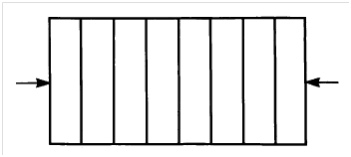Basic Principle of Prestressing
The classic everyday example of prestressing is this: A row of books can be lifted by squeezing the ends together: The structural explanation is that the row of books has zero tensile capacity. Therefore the ‘beam’ of books cannot even carry its self weight. To overcome this we provide an external initial stress (the prestress) which compresses the books together. Now they can only separate if the tensile stress induced by the self weight … Read more

